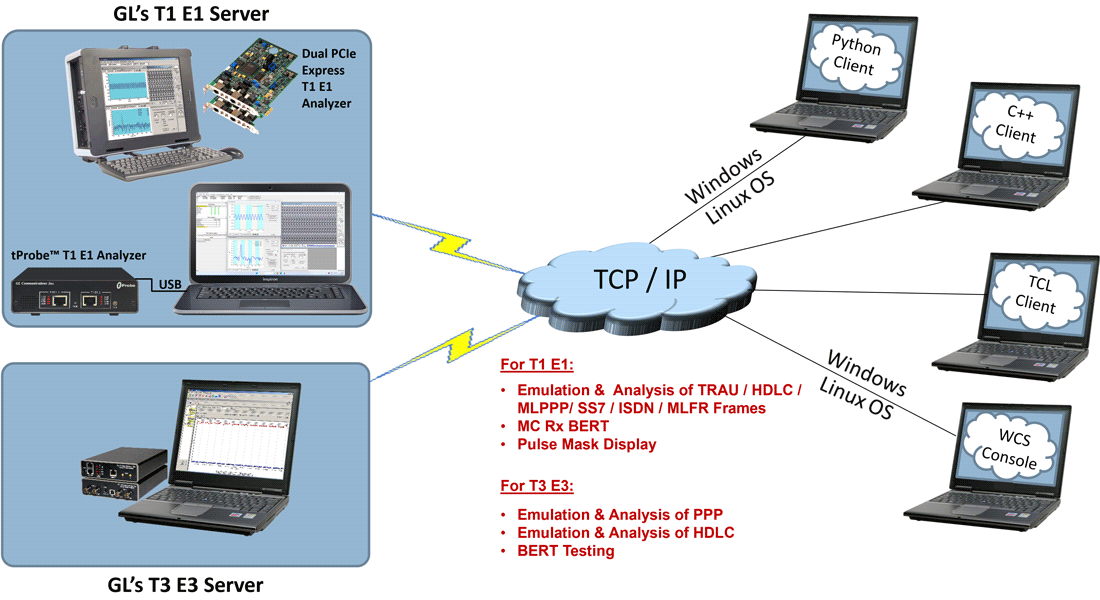T1 E1 Analyzer Client/Server Scripting for Linux / Windows
Welcome to another GL Communications' newsletter providing information on our latest T1 E1 Analyzer which supports Python Client/Server scripting for both Windows and Linux operating systems.

GL's Windows Client/Server (WCS) software allows the user of T1/E1 Analysis / Emulation cards (with portable, dual, quad, and octal interfaces), the capability of remote operation, automation, and multi-site connectivity. T1/E1 Cards in a Server are easily controlled through software Clients at remote or local sites via TCP/IP sockets. Connectivity can be via Dial-Up, LAN, WAN, or more typically the Internet. Server software can run multiple tasks simultaneously at the request of the Client software.
In the recent enhancement, WCS software is enhanced to support Python scripting on both Windows and Linux operating systems. The Windows Client Python Module (WCPM) wcli_t1_e1.pyd provides a client interface to the T1/E1 WCS servers. It allows a python program to connect to one or more GWSs and execute server commands, asynchronous tasks and receive replies from GWSs. WCPM enables connection to multiple GWSs allowing the python program to control T1/E1 equipment at multiple computers and geographical locations via TCP/IP. The supported Python versions are 3.6, 3.7, and 3.8.
All the complexity of TCP/IP communications is completely hidden from users and is reduced to invoking functions with string parameters and functions returning string responses.
WCPM complies with python naming convention standards and development practices. When WCPM functions are invoked incorrectly a proper exception is thrown making it easy to diagnose and correct the problem
Real world applications include:
- Support for framed and unframed transmission / reception of signals
- Intrusive / Non-Intrusive T1/E1 Testing
- Performance monitoring and testing of multiple site locations from a single client
- Shared use of T1/E1 test equipment from multiple client locations
- Automated factory testing on production lines
- Integration of T1/E1 testing into more complex testing systems
- Example monitoring tasks
- Monitor Signaling Bits
- Detect and report DTMF/MF/MFC-R2 digits on channels as they occur
- Precision Delay Measurement
- Monitor, report, and record alarms at various sites every two seconds or as they occur
- Intrusive Testing
- Record / Playback functions
- Supports auto and manual error insertions
- Dual VF Tx Rx to perform analog Tx/Rx functions
- Perform BERT on selected timeslots involving multiple paths simultaneously
- Optional applications - (requires additional licenses)
- Jitter Generation, Measurement, and Pulse Mask
- Fax Emulation– 2 to 120 Fax Ports
- DSP Operations (requires additional licenses)
- Supports Static DSP commands for Amplification/Attenuation, Delay, Filter, File Tx/Rx, Logical operations, Echo Cancel, and more. The enhanced Tone detection, ADSI (Analog Data Services Interface) commands support Caller ID detection including CID, CIDCW (Call Waiting), VMWI (Visual Message Waiting Indicator) signal types
- Dynamic DSP Capability
 Back to Newsletter Index Page
Back to Newsletter Index Page